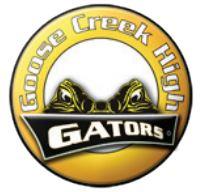Opening doors to new energy career options
Advanced Career Clean Energy Technology
“This curriculum raises the bar,” says Sara Smith, who teaches Advanced Career’s Clean Energy Technology curriculum. Smith has been teaching for 11 years, and for the last three years, has been teaching courses 1 and 2 of the Clean Energy Technology pathway four-course sequence.
Goose Creek High School, South Carolina.
Smith credits the AC curriculum with helping her design more creative and engaging lessons that challenge her students to learn at deeper levels. She offered the following. “The curriculum pushes students to do more than they have done before. I have been surprised by their ability to stick with it and come through and do the work. They like the challenge. I know they aren’t challenged as much in their other classes.”
Before teaching this curriculum, Smith taught chemistry and says she commonly underestimated the work her students were capable of. This often resulted in less-challenging and less-rigorous assignments, she notes. “Overall, I think many teachers underestimate what students can do. The assignments and projects motivate students and raise their expectations for the quality of their work. I know that they are learning more through the productive struggle.”
Teacher as Facilitator
Smith credits the AC curriculum with helping her students embrace grappling with rigorous assignments and projects. This forced her to assume more of a facilitative role as opposed to a lecturer.
“In this class, I am more of a facilitator. I guide the students to where they need to go and what they need to do. I guide them to websites and show them how to use the technology, but once they figure it out, they’re on their own, with me there as a guide. I don’t stand up and lecture.”
Opening Students’ Eyes to Career Opportunities
Smith’s students have benefited not only academically from the AC curriculum, but from the exposure to potential new career fields.
“I had one student who finished the first two courses and is now getting ready to graduate who is considering becoming an environmental engineer in some type of renewable energy field,” she said. “The assignments helped him realize that he could go to college, get a degree and get a job in this field.”
“I have had people come in and see the geothermal prototypes students are designing, and they can’t believe high school students led that work.”
Amazed at Students’ Work
After experiencing the benefits firsthand, Smith is passionate about AC and encourages other schools to get involved. “The program will help teachers do something that they have never done in a classroom,” she said. “I invite as many people to my classroom as I can get to come. I think most people who visit are surprised by the assignments we are doing. I have had people come in and see the geothermal prototypes students are designing, and they can’t believe high school students led that work.”
“I had a guy from Berkley Electric come in for a solar panel project presentation, and he was so impressed that high school students designed the solar panels themselves, and developed training protocols to answer the essential questions of how to train people in developing-nations to make and use solar panels,” Smith said. “People are simply impressed by the level of work these students are willing to do.”


